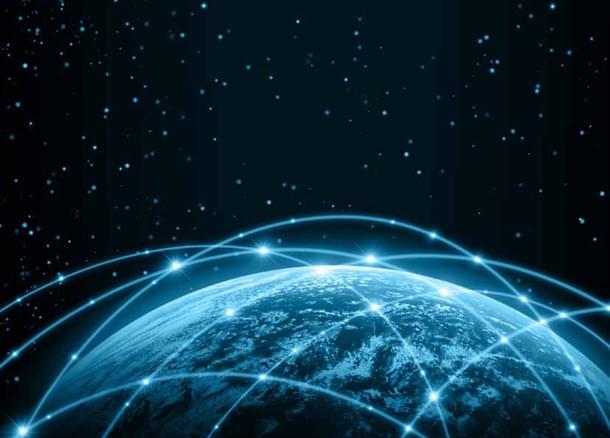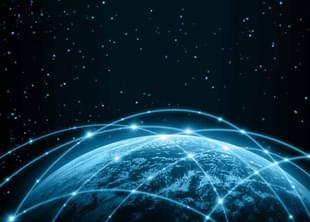Magazine
The World Waits
Amb K C Singh
Mar 11, 2015, 04:30 PM | Updated Feb 24, 2016, 04:27 PM IST
Save & read from anywhere!
Bookmark stories for easy access on any device or the Swarajya app.


Assuming a positive growth outcome for India, by 2020, it should be closer to assuming its rightful place at the global high table
While futurology is an imperfect science, major powers do undertake scenario-building to enable policy-makers to apportion national resources for realigning national power to meet incipient challenges and benefit from opportunities. India has just set-up NITI Aayog, a think tank to replace the Nehruvian-era Planning Commission, to conflate economic and strategic options. This is an opportune time to examine how India may be globally situated over the remainder of this government’s term and what the next Indian government may confront by 2020—a year after the next parliament election due in 2019.
[level-subscriber]
India would have to balance its preoccupation with its neighbours and its periphery, with its relations with the big powers, amongst which it sits at the G20 meetings. First come relations with China and Pakistan, then with the other SAARC nations as they position themselves around the dynamics of the rise and inevitable competition of China and India, and finally, the destiny of SAARC itself. Beyond that, India would very closely watch the developments in the Gulf, to the West and in the India-Pacific region to the East as an attempt is made to obtain what India officially calls an “inclusive” Asian security order.
The Asian drama will be played out amongst the big five powers: China, India, Japan, Russia and US. China, as the largest economy in the world on PPP basis, and with its trajectory of economic and military growth, will continue to determine decision-making of all nations along its Asia-Pacific periphery, in an arc from Japan to India. Opinion is yet divided whether China can maintain its planned moderate rates of growth or its ballooned internal debt will cripple its growth. According to the McKinsey Global Institute, Chinese debt rose from $7 trillion in 2007 to $28 trillion in mid-2014. The Financial Times poses the question as to what happens were China to falter and “the world has at last run out of big economies able or willing to run large asset-price-fuelled credit booms”. The result could be a slowdown of global growth.
The second issue is whether the Chinese rise can continue to be peaceful or its selectively revisionist approach to the post-World War II international financial and security order will lead to increased friction or even conflict. One view is that as long as Chinese growth remains on course and the internal social order is not disturbed, Chinese nationalism can be contained by US balancing, in concert with Asian partners. Contrariwise, President Xi may resort to jingoism, like Russia under President Putin, to distract from travails of economic turbulence.Taking the history of Chinese conduct in South Asia since 1962, utilising surrogates in the Indian neighbourhood like Pakistan to constrain India, the current India policy of flexible quasi-alliances with major powers that share the same concerns vis-a-vis China will persist, hopefully ensuring China’s orderly rise.
Of continuing serious concern to India also is the rise of radical Islam, its transmutation using the internet and the multiplier power of social media, into deadly new forms like the ISIS. This menace will dominate the international scene during and beyond this decade. The danger is redoubled and its containment rendered difficult by the Shia-Sunni rivalry and the direct involvement of Gulf powers on both sides of the conflict.
For instance, after the killing of Coptic Christians by ISIS affiliates in Libya, the air forces of Egypt and the UAE attacked ISIS targets in Derna, Libya, while support for those being attacked could be traced to Turkey and Qatar. The danger to India is self-evident due to its 180-million-plus Muslim population and the polarising atmosphere created by the extreme right wing elements within and outside the ruling BJP. Effective countering of this scourge is not just a security approach but a battle for the minds and hearts of the Indian youth and potential recruits.
Post-Cold War, as it became evident that a unipolar world was unsustainable, the world seemed headed towards a multipolar arrangement. An integrating Europe was seen as an inevitable and important pole in the new order. The Eurozone crisis, Germany’s ineffective leadership of Europe through it, faltering economies of bigger members and growing xenophobic and Eurosceptic political parties seem to belie this. It is possible that leadership may emerge in the coming years in Germany, France and the UK (elections are due in the summer) which redirects Europe back to that path, but at the moment that appears a mirage.
The world’s renewed interest in India was kindled by Prime Minister Modi’s electoral mandate. However, nine months into the government, his debacle in Delhi elections having punctured his political invincibility, his reform agenda, advanced by ordinances and not parliamentary debate and voting, faces a strong challenge from street protests and opposition resistance within Parliament. Despite scepticism about revised higher growth rates posted by India recently, the world still believes in India as the new driver of global growth. The next few years will tell if India can fulfil this hope. By 2020, it should become evident whether India is on the trajectory of sustained rise.
Of course, the Indian growth path will have to be different from China’s due to global focus on climate change and sustainable development, because of the considerable damage that the Chinese model has done to habitat and natural resources.
Today, more than half the world’s population is urban. This is expected to double by 2050. Demand for water will rise by 55 per cent by 2050 and energy by 33 per cent by 2035. The biggest driver in all this will be India. However, as a democracy, India will perforce be a gradual reformer as change needs political marketing to ensure it is not demonised as population control steps were during the Emergency.
The Indian story of growth can be a model for the developing world as solutions on education, healthcare, housing and employment crafted in a democracy will have universal acceptance, unlike the Chinese model based on State-driven prescriptive growth. The current decade can either position India as such a successful model or consign it into a Brazil-like low-middle-income trap.
Assuming a positive growth outcome for India, by 2020 it should be closer to assuming its place at the global high table through permanent membership of the UN Security Council, membership of the four technology control regimes—Nuclear Suppliers Group, Missile Technology Control Regime, Wassenaar and Australia Groups, increased voting rights at the IMF/ World Bank, and as a more active determinant of peace and security in the Indian Ocean and its rim. It should be on the brink of having a true blue water navy, a more versatile and mobile army/air force and with differentials of power vis-a-vis Pakistan increased and China narrowed. Thus the next five years will show whether Modi is India’s Deng Xiaoping or merely a Brazilian Lula.
[/level-subscriber]
Amb KC Singh is a Former Diplomat and Strategic Affairs Expert.





